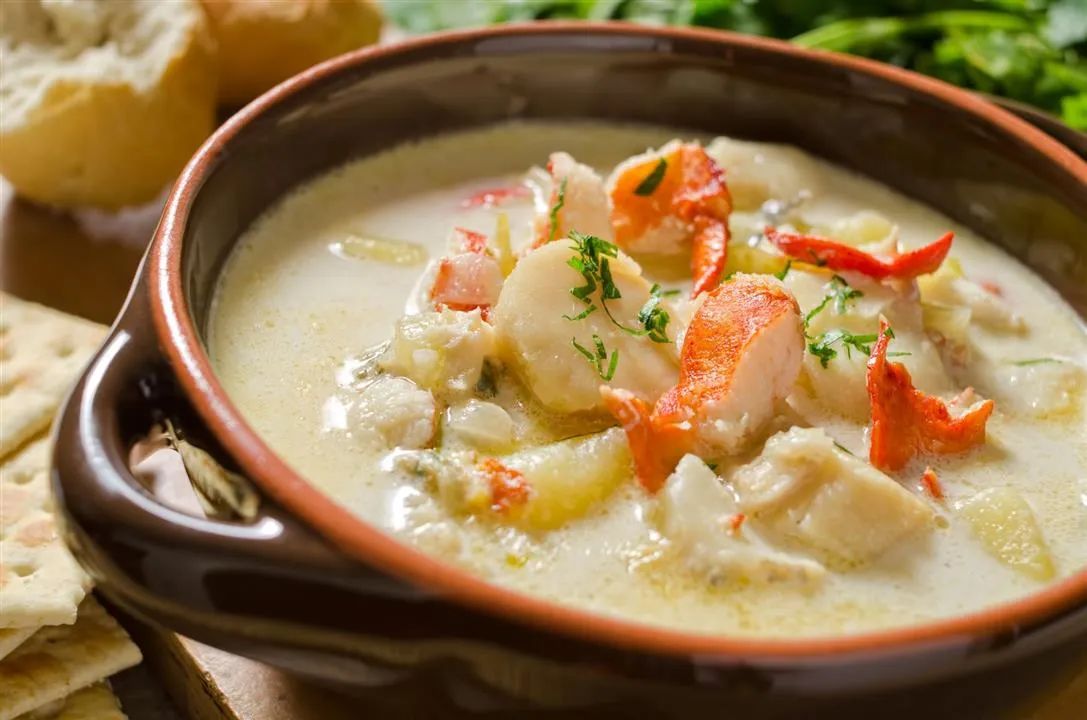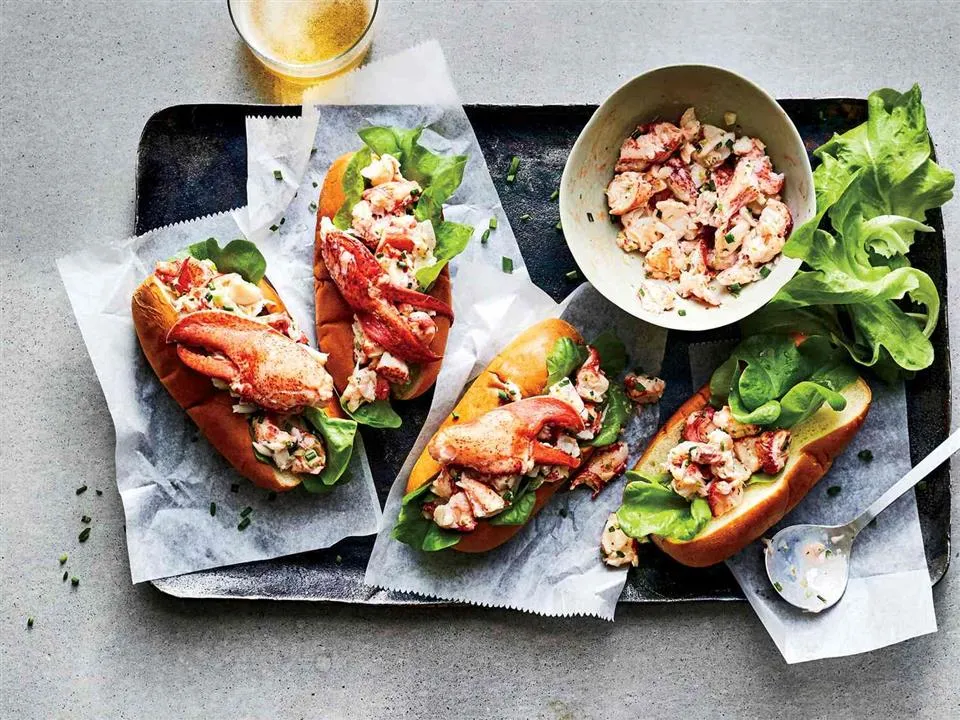Maine, a state nestled in the beautiful New England region of the United States, is renowned not only for its pristine coastline, majestic forests, and fresh seafood but also for its rich Indigenous cultural traditions. Unbeknownst to many, Maine is the ancestral homeland of the Wabanaki Confederacy, the “People of the Dawnland,” long before European settlers arrived. Exploring Maine becomes even more meaningful when we delve into the unique culture and diverse culinary heritage of its Native American communities.
Wabanaki cuisine is more than just sustenance; it is an integral part of their culture, history, and spirituality. From traditional dishes prepared with natural ingredients to unique customs in food harvesting and preparation, everything reflects the deep connection between people and nature. Join “Du lịch khắp thế gian” as we uncover the distinctive aspects of Native American cuisine in Maine, gaining a deeper understanding of the identity and long history of this land.
Historical Footprints and Wabanaki Culture
The Wabanaki Confederacy, comprising five main tribes—Abenaki, Penobscot, Passamaquoddy, Maliseet, and Micmac—has inhabited Maine and surrounding areas for millennia. They are children of the forest and sea, living in harmony with nature and developing a unique culture based on respect and gratitude for their environment.
Wabanaki life is intertwined with the rhythm of the seasons and the abundance of nature. They are skilled hunters, fishers, and farmers, adept at sustainably utilizing resources. Maine’s forests and rivers provide them with food, building materials, and medicine. Their cuisine reflects the diversity of the natural environment, from fresh seafood to wild game and foraged and cultivated fruits and vegetables.
Wabanaki culture is also rich in traditions, with ceremonies, legends, and oral arts passed down through generations. Stories recount the origins of the world, the relationships between humans and animals, and profound moral lessons. Their artistry is evident in wood carvings, basket weaving, and meticulously decorated clothing, all bearing the hallmarks of nature and community spirit.
Traditional Cuisine – A Symphony of Flavors from Nature
Traditional Wabanaki cuisine is a symphony of flavors created from the fresh ingredients that nature provides. They utilize everything from the forest, rivers, and sea to create dishes that are not only delicious but also nutritious and culturally significant.
Seafood – Gifts from the Ocean: With its long coastline and abundant marine life, fish, shrimp, clams, and mussels are essential components of the Wabanaki diet. They are skilled at fishing and seafood harvesting, using nets, spears, and traps. Atlantic salmon was once a vital food source and held spiritual significance for the Penobscot people. Clams and mussels are often made into soups or grilled over hot coals, preserving their natural fresh flavors.
Wild Game – A Rich Protein Source: Maine’s forests are home to various wildlife, including deer, moose, bear, rabbits, and birds. Wild game provides a crucial source of protein for the Wabanaki. They are skilled hunters, practicing respectful and sustainable hunting methods. Wild game is typically roasted, smoked, or stewed, often combined with vegetables and natural seasonings.
Wild Fruits and Vegetables – Colors from the Forest Floor: In addition to meat and fish, the Wabanaki also gather and cultivate a variety of wild fruits and vegetables. Blueberries, strawberries, raspberries, and other berries grow wild in the forest and are valuable sources of vitamins and antioxidants. They also cultivate corn, beans, and squash, known as the “Three Sisters”—three crops that complement each other and play a vital role in the traditional agriculture of many North American Indigenous tribes. Wild greens such as ferns, wild leeks, and spinach are also foraged and prepared into delicious dishes.
Traditional Cooking Methods: The Wabanaki employ traditional food preparation methods such as grilling over coals, smoking, boiling, and stewing. Smoking is a crucial technique for preserving meat and fish while also imparting a distinctive flavor. Stews are often cooked in earthenware or stone pots over fire, combining various ingredients to create rich and nourishing flavors.

Clam chowder, a popular dish in New England, may have roots in Indigenous cuisine with its use of local seafood.
Wabanaki Cuisine and its Influence on Modern Maine Food
Although modern Maine cuisine is heavily influenced by European culinary traditions and other immigrant cultures, the profound imprints of traditional Wabanaki cuisine are undeniable. The connection to local ingredients, especially seafood and forest products, remains a prominent feature of Maine’s food scene.
Local Ingredients – The Foundation of Maine Cuisine: World-renowned Maine lobster, fresh scallops, and fragrant wild blueberries are iconic Maine products, and they are also essential ingredients in traditional Wabanaki cuisine. The use of local, seasonal ingredients is a culinary philosophy passed down by the Wabanaki and continues to be upheld today.
Cooking Techniques – A Blend of Tradition and Modernity: Some traditional Wabanaki cooking techniques, such as smoking and grilling over coals, are still used in modern Maine cuisine, particularly in restaurants specializing in grilled dishes and seafood. The combination of traditional techniques and modern cooking methods creates diversity and richness in Maine’s culinary landscape.
Lobster Roll – An Iconic Dish with Indigenous Influence: The Lobster Roll, a culinary symbol of Maine, can be seen as a fusion of Indigenous ingredients (lobster) and modern cooking techniques (bread). While bread is not a traditional Wabanaki ingredient, the use of fresh lobster, a prized product of Maine’s coast, demonstrates a continuation of the Indigenous spirit of valuing local ingredients.

The lobster roll, a famous Maine dish, uses lobster, a historically important food source for the Wabanaki.
Clam Chowder – A Harmony of Ocean Flavors: Clam Chowder, the creamy soup characteristic of New England, may also have origins in Indigenous cuisine. The use of fresh clams, potatoes, and local vegetables in this soup reflects the connection to natural ingredients and the traditional Wabanaki soup-making technique of stewing.

Manhattan clam chowder, a variation of the traditional soup, showcasing the regional diversity in cuisine.
Experiencing Wabanaki Culture in Maine
To truly explore Native American culture in Maine, visitors can engage in various unique activities and experiences.
Visit Cultural Centers and Museums: The Penobscot Nation Museum and Cultural Center on Indian Island and the Passamaquoddy Cultural Heritage Museum at Indian Township are excellent places to learn about Wabanaki history, culture, and art. Visitors can admire historical artifacts, traditional artworks, and participate in educational programs to gain a deeper understanding of the rich cultural heritage of the Indigenous communities.
Attend a Powwow: A Powwow is an important cultural event for Native American people, where tribes from across the region gather to celebrate, dance, sing, and share their culture. Attending a Powwow in Maine is a fantastic opportunity to experience the vibrancy and color of Wabanaki culture, enjoy traditional food, and interact with the Indigenous community.
Explore Tribal Parks and Preserves: Some Wabanaki tribes open their tribal parks and preserves to visitors, allowing them to explore nature and learn about the connection between Indigenous people and the land. The Passamaquoddy Tribe Park at Pleasant Point and the Penobscot Indian Nation’s Indian Island Reservation are prime examples.
Savor Indigenous Cuisine: Some restaurants and eateries in Maine are making efforts to revive and showcase traditional Wabanaki cuisine. Visitors can seek out restaurants that use local ingredients and prepare dishes in traditional styles, or participate in cooking classes to learn how to prepare Indigenous dishes.
Engage and Learn from the Wabanaki Community: The most important aspect of exploring Native American culture is to show respect and willingness to learn. Visitors can seek opportunities to interact with members of the Wabanaki community, listen to their stories, and learn about their perspectives on culture, history, and the future.
Conclusion
Exploring Native American culture in Maine is a meaningful and profound journey that helps us better understand the history and unique cultural identity of this land. Traditional Wabanaki cuisine is not only delicious food but also a vital part of cultural heritage, reflecting the deep connection between people and nature. When traveling to Maine, take the time to explore and experience Wabanaki culture to make your trip more complete and meaningful. Remember that respecting and learning about Indigenous cultures is the best way for us to connect with the world and broaden our horizons.